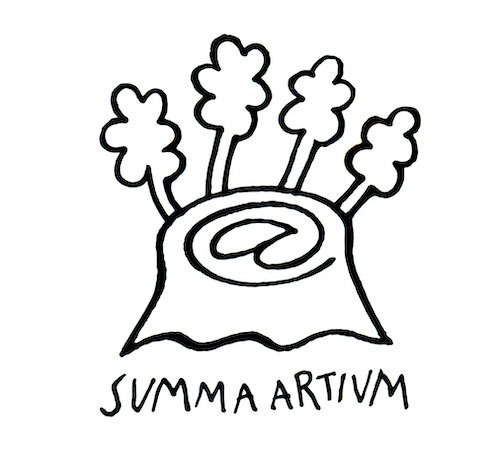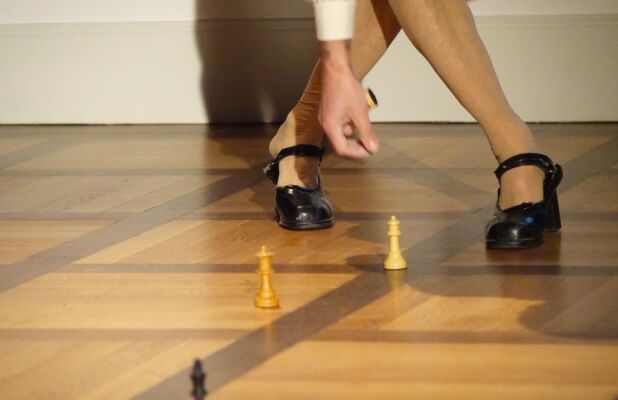Gold und Liebe I. – A conversation with Katie Zazenski on care, (virtual) identities, Stroboskop art space and Poland’s political reality
Located in a small garage in Warsaw’s Ochota district, Stroboskop Art Space is an alternative, exploratory platform that engages with both the Polish and international art community. Through a program of critical exhibitions and performances, lectures, screenings, and community meetings, Stroboskop is a space for experimentation. Stroboskop was founded in 2016 by Norbert Delman, Agnieszka Delman, Przemek Strozek, Franek Buchner, and Jacek Słoniewski. Katie Zazenski joined the team in January, 2018 and Martyna Stołpiec joined in June, 2019. Stroboskop is co-directed by Zazenski and Stołpiec.
The gallery’s current and final project of 2020 is The Zelmot Experiment, an experimental residency program that they’ve developed with SAM Rozkwit. The project, Baranek (in Poland it translates to lamb but is also the name for a plastering technique), is a collaboration between Zuzanna Piętkowska and Alka Nauman. The first of five Dada-esq YouTube episodes premiered on 1.11 and will be premiered monthly.
Katie Zazenski is an American-born, Warsaw-based artist, curator, writer, teacher, and collaborator who explores interconnectedness, rhizomatic structures, community, kindness and care in her work and life. She has lived across the US, Europe, and China, and has called Warsaw home for the past five years. She is a visiting lecturer in drawing and sculpture in the US and Poland, at institutions like Dartmouth College, Rutgers University, and the School of Form. Most recently, Zazenski has joined the editorial team at Blok magazine (PL) where she focuses on the community of non-institutional, artist-run/project spaces in Eastern Europe.
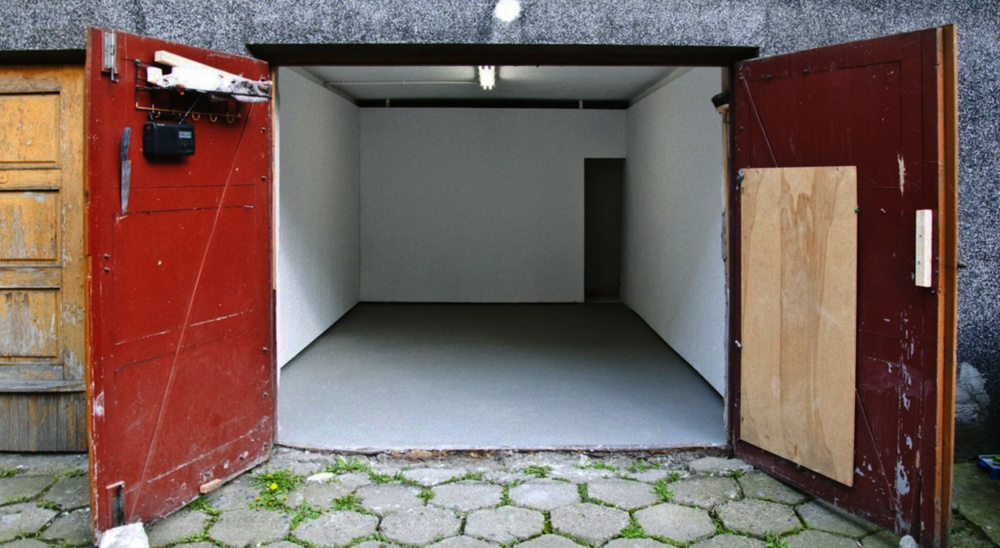
Ráhel Anna Molnár: Being a DIY, artist-run space, Stroboskop has been run by a group of cultural workers – including theatre directors, critics, art historians and artists. What’s been your role within this community?
Katie Zazenski: I became a part of Stroboskop in January 2018. By the time I got there, Norbert was the only person left to run things and that’s essentially why/how I had the opportunity to join. I run the space now with Martyna Stołpiec, who joined me in June 2019. We don’t have any support so are responsible for 100% of what happens here, we also don’t really have designated tasks, rather manage things according to our personal schedules. It’s always kind of fluid. Because I’m not from Poland and have developed communities around the world, part of my role is to connect us more globally. In cities like New York or Los Angeles you have people from literally everywhere, so you have this real opportunity for a lot of different voices to be represented. In a place like Warsaw, despite it being home to an international community, by sheer scale it can still tend to feel very homogeneous. It has become really important to me to connect all these different people and spaces, to start building dialogues and connecting the parallel conversations across landscapes.
One example of this is our co-curated screening series. In 2019 we co-curated two screenings with artist-run spaces from the US. Brooklyn-based DĄĄB was our partner for POWER POSE, a 50-minutes video anthology featuring 11 artists from around the globe, curated around the emotional and political space of bodies, speculative exercises, exploring the possibility of creating monuments to queer or othered bodies and communities, monuments that commemorate joy, sexual pleasure, etc. FOREIGN BODIES was a collaboration with Carnation Contemporary in Portland, OR, which brought together nine international artists exploring themes of nation-state normalization and the body as a site of spirited resistance.
These collaborations evolve pretty organically; we (the curators) typically picked a theme together based on what’s happening in the world and bring artists from our disparate communities together in this shared dialogue. Sometimes we have a stronger curatorial hand and other times they come in and know exactly how everything will happen. For us, all of it is great. We’ve also observed that with each opening we have new a new audience joining us; our community has its core but there’s always someone we’ve never met before or have spoken with. This I think is one of the best parts about this space.
What is the current situation in Warsaw and how can the art community relate to it? We’ve read about the poster campaign of the Polish artist, Jarek Kubicki[1] for the protests. Has there been any other reactions from the artistic field? How Stroboskop relate to all this?
What began as a protest against the ruling for an essential total ban on abortion has since transformed into a protest of the ruling party. On October 22 the Constitutional Tribunal ruled abortion of a severely deformed fetus to be unconstitutional. I don’t need to get into the inhumanity of this. The women’s strike (strajk kobiet) has become the umbrella (pun intended) for injustices against women, the LGBTQIA+ community, for all grievances towards PiS (Prawo i Sprawiedliwość/Law and Justice party), and has mobilized people of different social and economic strata, across the nation and the world quite frankly, to support women in the fight against their government(s). On the evening of October 28, the leader of PiS, Jarosław Kaczyński, railed against the protests and called on the people of Poland to protect their nation from protesters using any means necessary, which of course resulted in a targeted, violent attack of anti-fascist groups during the protests on Friday, October 30. As an American this hit deeply, having witnessed an explosion of nationalist violence since 2016 bolstered by not only by Trump’s refusal to condemn extremist, Fascist violence, but to actually condone it. I sincerely hope Poland is better than this. Regarding the response from the art community, well, we’ve all added the red lightning strike frames to our Facebook profiles. I’m an editor of Blok magazine, together we wrote a statement in support of the protests and invited international arts workers to contribute an action in solidarity. Formally, Stroboskop hasn’t taken a specific action, rather we just become more and more committed to being a platform for progressive notions for how to exist in this world – aesthetically, conceptually, philosophically; we are advocates for care and responsibility towards one another. We are a space that believes in challenging convention, in nurturing and bolstering our community, in communication and transparency, and in critically exploring and expanding the role of art.
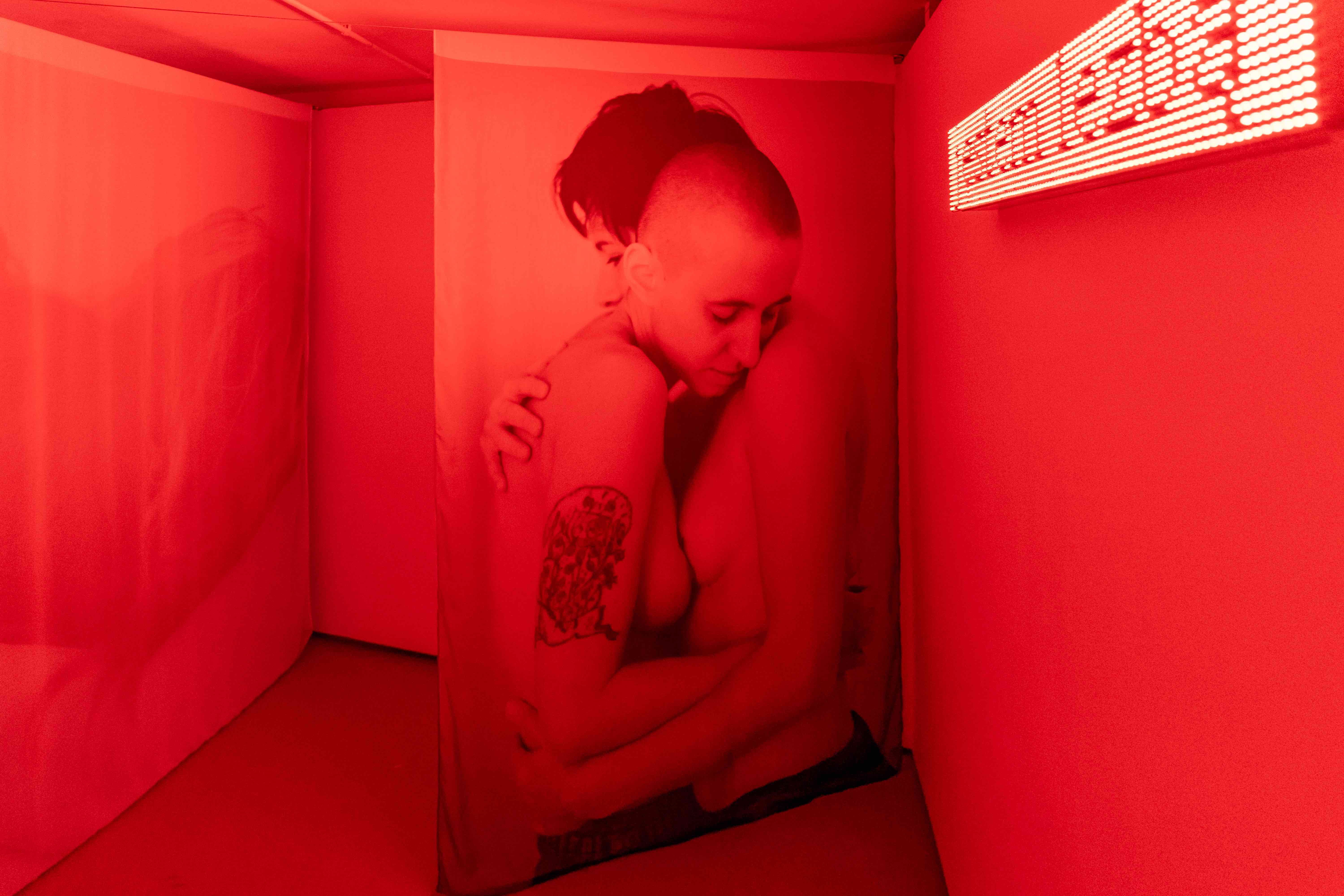
Gay and women rights have always been an issue in Poland, but this summer, in the middle of the global pandemic and the elections, these communities had to face a massive rejection and stigmatization of queer identity. LGBTQ culture was articulated as “an ideology worse than communism” by sitting President Andrej Duda, who shortly after that statement, won a second term. At the same time, Stroboskop hosted an exhibition by Polish artist Karolina Sobel entitled LEZBY.
Leading up to the elections this past summer the anti-LGBTQIA+ rhetoric picked up pace as a distraction from the pandemic and resulting economic situation. It’s not a new tactic. We opened Karolina’s exhibition on June 20, just days after President Duda made this statement so the timing could not have been more apt. The word ‘lezby’ in Polish is a pejorative, essentially the equivalent of ‘cunt’. LEZBY was sort of a response to Karol Radziszewski’s groundbreaking exhibition from 2005, Pedały, which dealt with themes of homosexuality, censorship, risk, and desire in both mainstream and sub-cultures, from the male perspective. LEZBY was a reflection Polish queer history in these years since Pedały as well as a question, asking where are all the women in this narrative? Karolina really used this exhibition as an opportunity to feature a community, which for me was one of the most inspiring aspects of this collaboration.
Perhaps what was most disturbing about the events of this past summer was the escalation of police violence towards those protesting in support of the LGBTQIA+ community. Two and a half months after George Floyd was murdered in the US, photographer Rafał Milach documented a police officer in Warsaw holding a protestor on the ground in a chokehold. Let me be very clear: these are two very different, deeply nuanced situations that are not the same. There are, however, visual and civic correlations that are worth considering as institutional violence becomes more normalized/regularly occurring. I know many people personally who felt unsafe after these events. I think it’s also important to note here that Karolina is not the first queer artist we have presented, that we have a catalog of projects that have challenged ideas of normativity through performance, sculpture, and other media. 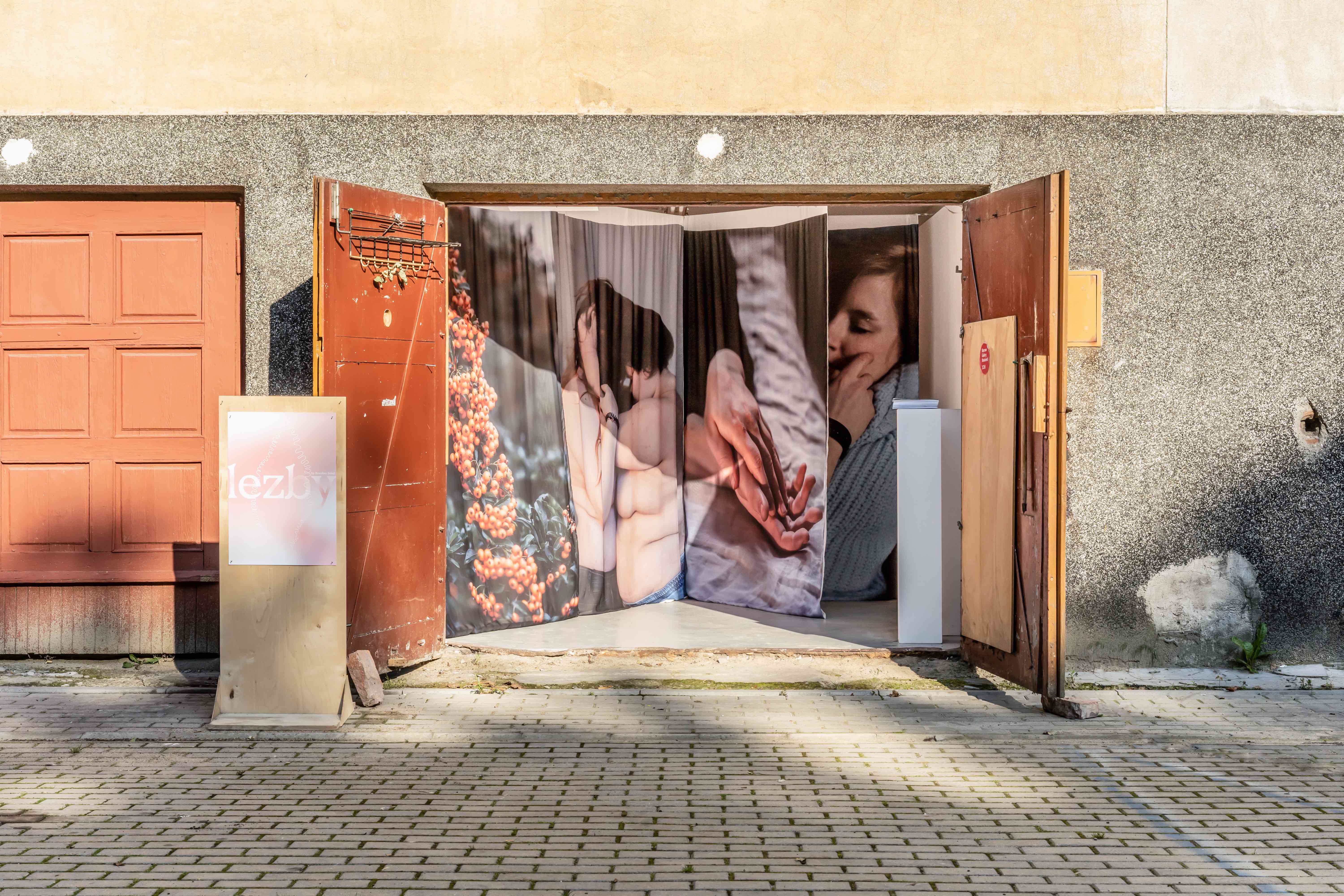
Talking about care and non-binary structures, the attitude and the perspective that is behind Stroboskop is deeply connected to queer-feminist approach in its nature. Right before the pandemic hit us globally you had a both on- and offline project Spring Fling, that pretty much translates to the ideas of caring as an alternative.
Spring Fling was the first project we presented in 2020, it was a collaboration with the activist group SAM Rozkwit. They are interested in facilitating a dialogue about how we live in and how nature exists in city spaces, and the critical role that the ‘działka’ (allotment garden) plays in urban Polish society. Together we were interested in exploring networks and community structure, knowledge, information sharing, and slippage – these liminal spaces between concepts, spaces, roles, etc. Mushrooms embody this liminality and non-hierarchical structure through their rhizomatic nature, so we realized that they were a really beautiful and apt way to talk about what was happening in our world. So, we started growing mushrooms in a bathtub in the gallery. Because the project opened just after we went into lockdown, we livestreamed the opening (where we planted the starters) and also created a Facebook group as a way to host a semi-open platform open to share ideas, projects, etc. with the community. We hosted live-streamed conversations and performances as well as invited the group to present anything they felt compelled to. We had all kinds of events from a cooking show with Baltimore-based artists Zachary+Sarah Titford to a live performance of the Chinese-born, New York-based artist and designer Carrie Sijia Wang. Meanwhile at the gallery, we harvested 3 batches of mushrooms! Some of them are still frozen and are waiting to be consumed by our community when it’s safe again. We haven’t formally closed this project so people are still posting related events, opportunities, projects, etc. in the online group.
In general, we operate under the premise of care and trust, the only way we can really manage everything that we do is through the support of our community. There is enough in the world that is difficult, oppressive, shitty, whatever; there’s no reason why you can’t be both kind and present critical programming, these things are not mutually exclusive.
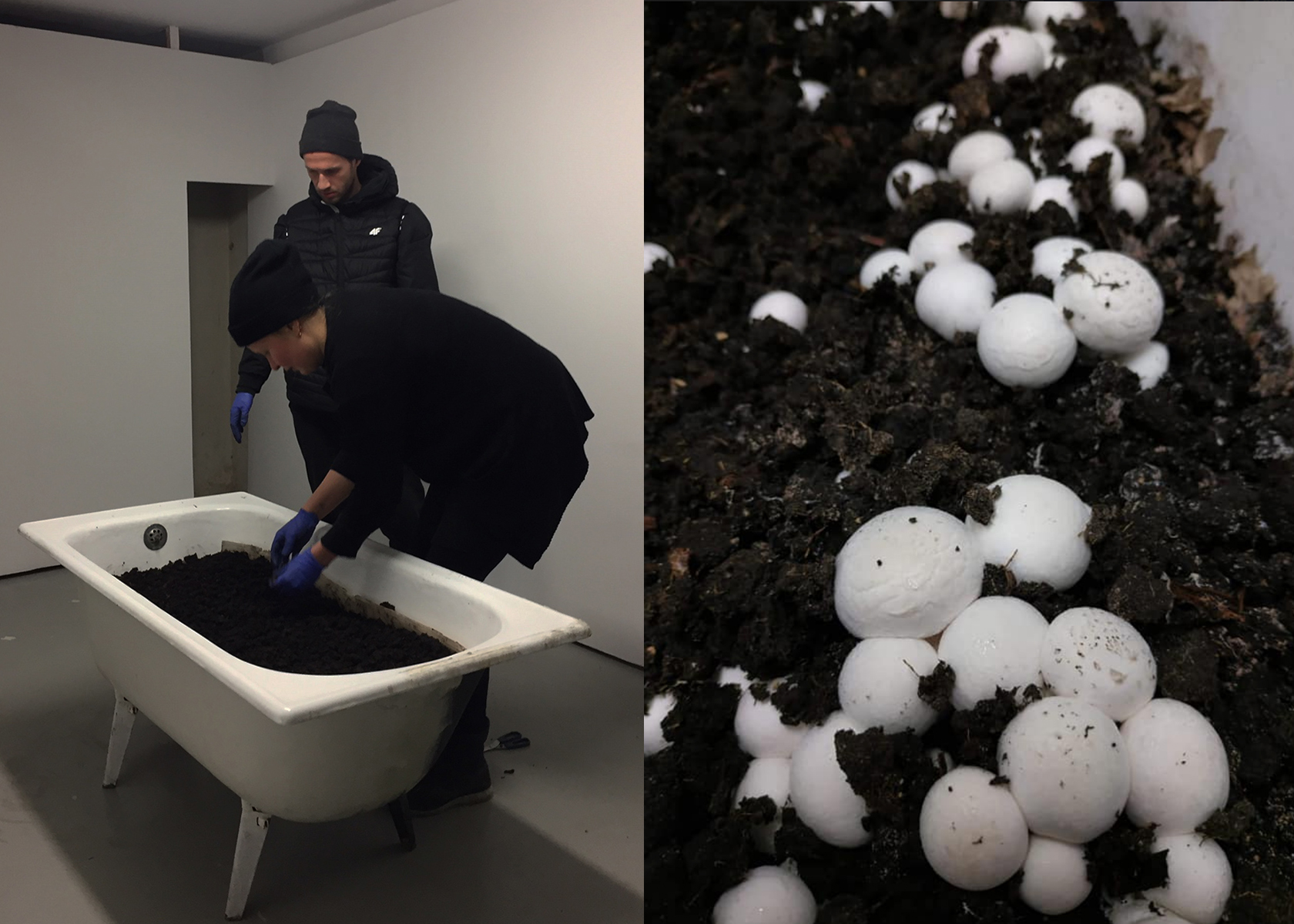
At the time of the quarantine, I got really frustrated by the amount of online content that poured on me. I felt obliged to follow and be hyperproductive myself, while it was obviously counterproductive. We all experienced the digital territory being the only space to connect, although it did look like we act in panic. How do you see the possibilities of care and intimacy in the virtual space? Can we create spaces where virtual identities are not bound to representation but have their own (political) agencies?
It’s a great question. In March, people totally began scrambling to migrate everything online as the first lockdowns hit. There was really no other option, it was totally unprecedented. While the internet is a brilliant tool and really did prevent global economic and social collapse, it’s not a mirror of the physical world and shouldn’t be negotiated in the same way. Now that we’ve had some time to reflect, we need to be asking what are we doing with this and how we do it in a way that is engaging, that is sustainable, and is also an acknowledgement of our physical, dimensional selves. I’ve actually just concluded a residency at the Center for Contemporary Art here in Warsaw (CSW Zamek Ujzadowski) called Re–Directing: East x Empathic Pedagogies: Future Intimacies. We were two groups: one based in Warsaw and one in Mexico City (we were all supposed to be together but of course the pandemic prevented it), working together for a month-long seminar focused on building intimacy in times of isolation, of operating in predominantly digital space. It has been one of the most transformative, critical, intimate experiences I’ve had recently and am still processing how that happened and what the circumstances were that contributed to this. It’s certainly not a formula. My project was actually an experiment in identity; together with Ola Andrzejewska (of Rozkwit), we explored what it is to navigate two bodies as one with core values of trust, authenticity, and curiosity. Outside of this, I think that the internet naturally lends itself to these spaces where people can freely experiment with identity (Facebook and Instagram of course) and intimacy (porn, for example). It actually performs as this kind of space so well that it’s problematic, and becomes an impediment to building social relationships in the physical world. We can as individuals, as discreet bodies, occupy more than one identity and have it be legitimate. But fluid identity and non-binary spaces are still threatening to a lot of people and definitely bureaucratically which is what we really need to reconcile.
[1] Nagy Gergely: Ez már egy másik ország – Jarek Kubicki grafikus, a varsói tüntetések plakátjairól. artportal
This article was created with the support of Summa Artium.
